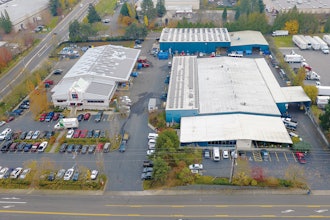The weather outside isn’t the only thing that can be frightful during the winter — pests such as rodents, cockroaches, stored product pests, ants and flies can cause nightmares if spotted at food processing facilities. And while you may be seeking an escape from the chilly temperatures, these winter pests will be doing the same.
Having pest presence at your facility can lead to a number of troubles such as product contamination, health threats, structural damage and low food safety audit sores. So, if one isn’t already in place, it’s important to have an Integrated Pest Management (IPM) program. IPM combines sanitation methods with facility maintenance strategies for a proactive and ongoing pest control plan. By establishing and reinforcing IPM at your facility, you’ll stand one step closer to a pest-free environment.
This winter, you should be aware of five winter pests and five pest prevention steps. Check out the following lists to learn key facts and best practices you can use at your facility.
Top Five Winter Pests
- Rodents: Rats and mice are always a major concern, but they can be even more persistent in finding their way inside food processing plants during the coldest months of the year. Known to carry diseases and cause fires by gnawing on electrical wires, these pests pose multiple threats to your business.
- Cockroaches: These pests are extremely resilient, as they can feed on almost anything and live without a source of water for up to a week and a half. For every one cockroach, there could be hundreds more hiding and reproducing in your facility.
- Stored Product Pests: Indian meal moths and other stored product pests are known to catch a ride into facilities after finding their way into grain and seed products throughout the supply chain. More than anything, these pests can cause damage to your products and make recalls inevitable.
- Ants: There are many different species of ants, but they all have one thing in common: They are a complete nuisance to facility managers. These pests can enter your building through the tiniest of cracks and are attracted to food odors, sweet substances and greasy grime that build up in drains.
- Flies: These pests breed rapidly indoors during winter months, and larvae can develop into adult flies within seven to 10 days. Once the larvae are adults, they can contaminate food and spread disease — each time a fly lands, it can leave behind harmful pathogenic microorganisms and bacteria.
Top Five Winter Pest Prevention Steps
- Close off entry points: While ants can enter facilities through small cracks, rats can squeeze through holes as small as a quarter. Sealing all cracks and crevices with weather-resistant materials, as well as closing all holes, can make an important impact on keeping pests out of your building.
- Follow a sanitation regimen: Many pests are attracted to grease and grimy buildup that can be found in food processing facilities. Consider implementing a routine sanitation plan that incorporates an organic cleaner each step of the way, especially underneath, behind and on top of equipment and machinery.
- Check equipment for proper placement and maintenance issues: If your equipment is cramped in small spaces, it may lead to areas that are hard to clean, allowing trapped food and microorganism growth. Ensure that all equipment is easily accessible from all sides so your sanitation crew can handle hard-to-reach spots. Also check to make sure all machinery functions properly. It is important that liquids and products do not collect inside machinery, as pests may be attracted to them.
- Conduct staff training: You don’t have to oversee an entire facility on your own. Conduct an IPM staff training and education program to get everyone on board with you. By ensuring everyone is on the same page, you’ll be able to spot pests quicker and prevent infestations before they begin.
- Consult a pest management professional: A licensed, trained pest management specialist can develop a customized treatment program for your facility. Work with your pest management professional to make sure you do everything possible to protect your facility, products and staff from the threats winter pests pose.
If you arm yourself with this knowledge, particularly pest proofing and sanitation, you’ll be doing your part to help keep winter pests in their place.
Dr. Zia Siddiqi is Director of Quality Systems for Orkin. A board certified entomologist with more than 30 years in the industry, Dr. Siddiqi is an acknowledged leader in the field of pest management. For more information, e-mail [email protected] or visit www.orkincommercial.com.























